OCEAN AVENUE HISTORIC DISTRICT, EAST HAMPTON
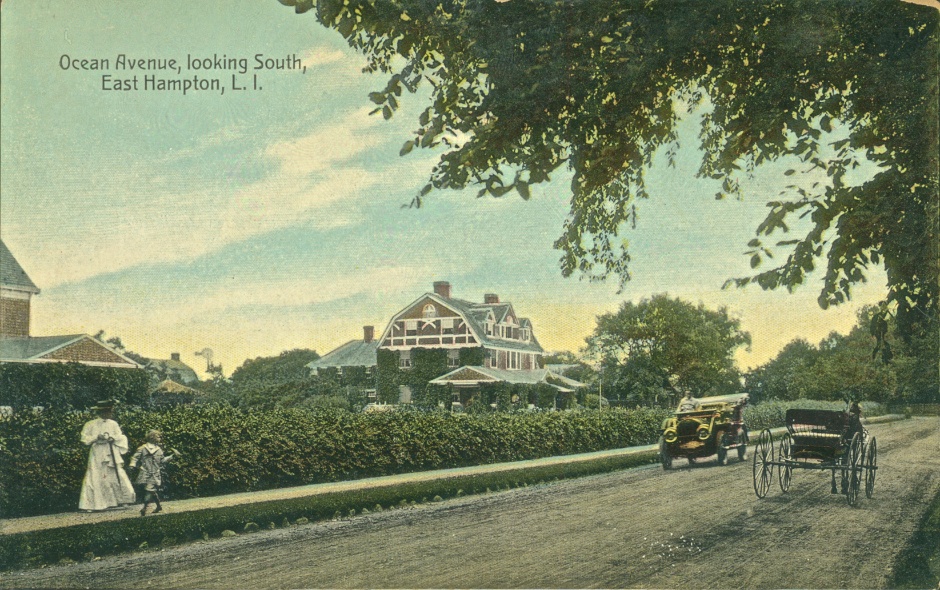
Ocean Avenue and the Robert S. Bowne House, c. 1910.
————————————————————————————————–
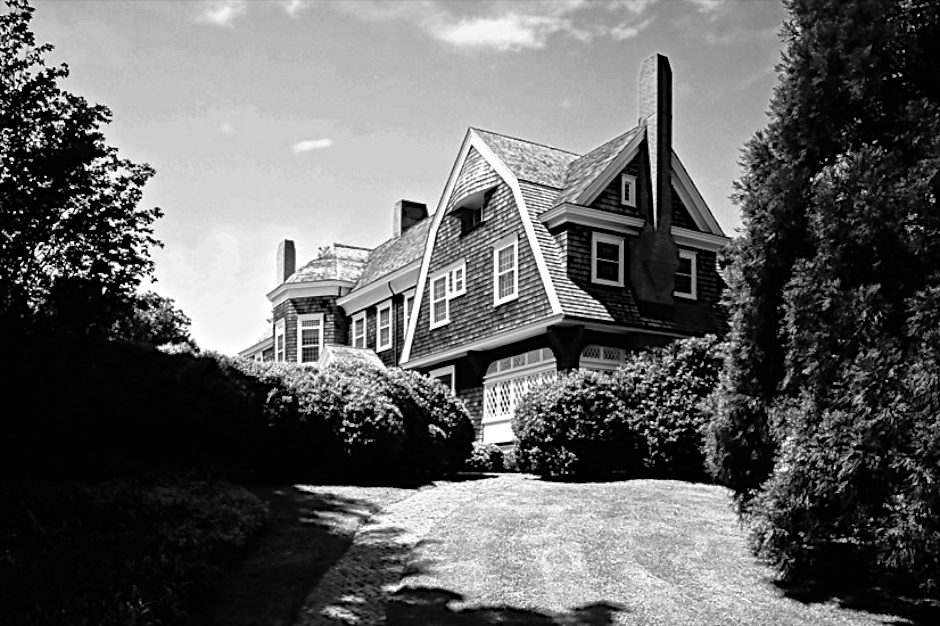
The architect Isaac Henry Green brought the Single Style to East Hampton in 1888 when he designed this summer residence for Dr. Everett Herrick. The site atop Pudding Hill commanded “a splendid view of the Ocean” across what was then open pastureland (The East Hampton Star, July 16, 1887). Dr. Herrick was at the head of the social life of East Hampton’s summer colony. He was instrumental in establishing the Maidstone Club and served as its first president. Dr. Herrick was family physician to many of the summer colony residents and made it his responsibility to take the temperature of the surf at Main Beach and declare when it was safe to swim.
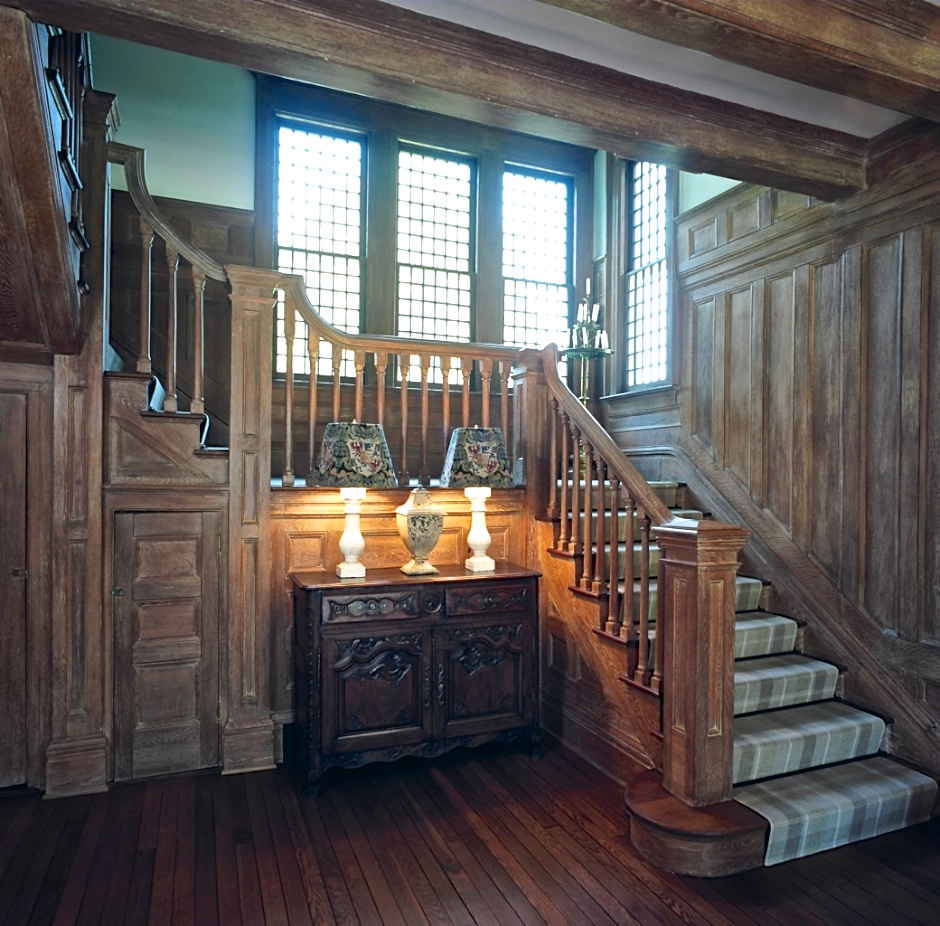
The entrance hall at Dr. Herrick’s Pudding Hill features a stairway with multiple flights, a large landing illuminated by windows with many small panes of glass, raised paneling and ceiling beams. All of these features from Colonial homes inspired the editor of The Star to write that Pudding Hill “combined a bit of seaside-resort architecture with the syle of the native old-fashioned houses.” (The East Hampton Star, July 12, 1889)
______________________________________________________________

In contrast to the Shingle Style houses on Ocean Avenue are three traditional Colonial Revival style houses with painted clapboard exteriors and classical details. The most significant of these is the Satterthwaite-Thompson House which represents the work of McKim, Mead and White, the leading architectural firm in America at the turn of the twentieth century. In 1895, McKim Mead and White remodeled the 1874 Satterthwaite villa for Charles Griswold Thompson, son of a prominent New York banker and grandson of John Lyon Gardiner, 7th proprietor of Gardiner’s Island. [See the Terbell House and the Mershon-Draper House below.]
______________________________________________________________

Dr. George E. Munroe, a friend of Dr. Herrick, built this cottage next door to Pudding Hill in 1889. Dr. Munroe had a deep appreciation for the character of East Hampton having spent summers in Main Street boarding houses since he was ten years old. It is not surprising that the house designed for him by Isaac Henry Green fits so serenely into the local setting. Dr. Munroe’s house well illustrates Charles de Kay’s 1903 observations that East Hampton’s summer cottages are “a plain architecture founded on colonial models” and that “the simplicity and sobriety of the scenery appears to have influenced the architecture” (The Architectural Record, January, 1903).


______________________________________________________________
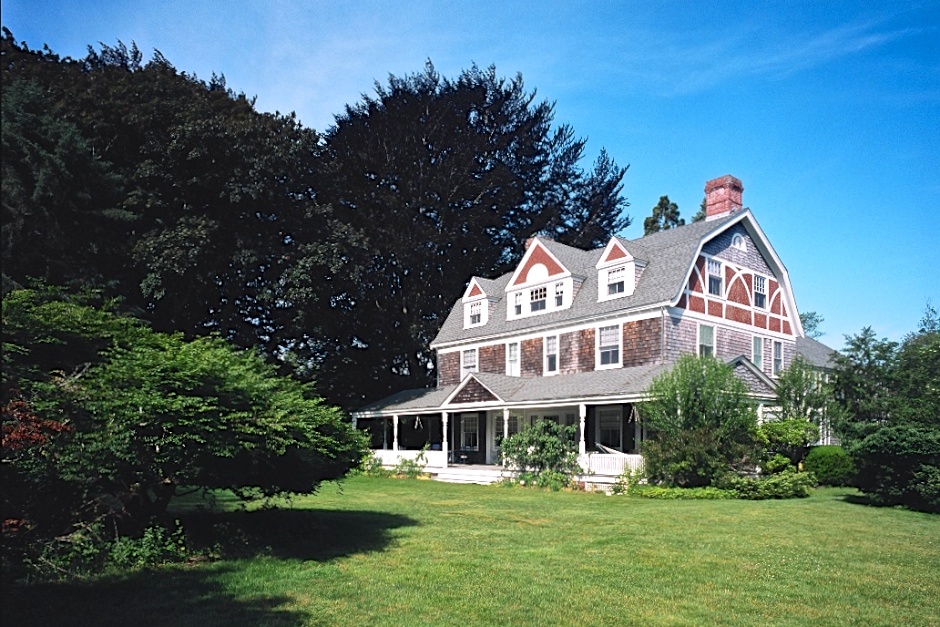
These side-by-side houses on Ocean Avenue — Robert S. Bowne House (above) & James Gallatin House (below) — both designed by James H. L’Hommedieu — were built in 1889. The Bowne House borrows its form from the 1747 Abraham Gardiner House (Ladies Village Improvement Society) on Main Street. The harmonious relationship between the summer cottages on Ocean Avenue and the Main Street farmhouses is especially evident in the Bowne and Gallatin Houses. Robert S. Bowne was first president of the Long Island Rail Road. James Gallatin, grandson of Albert Gallatin, Secretary of the Treasury under Thomas Jefferson, had spent many summers in East Hampton with his family before building his house.

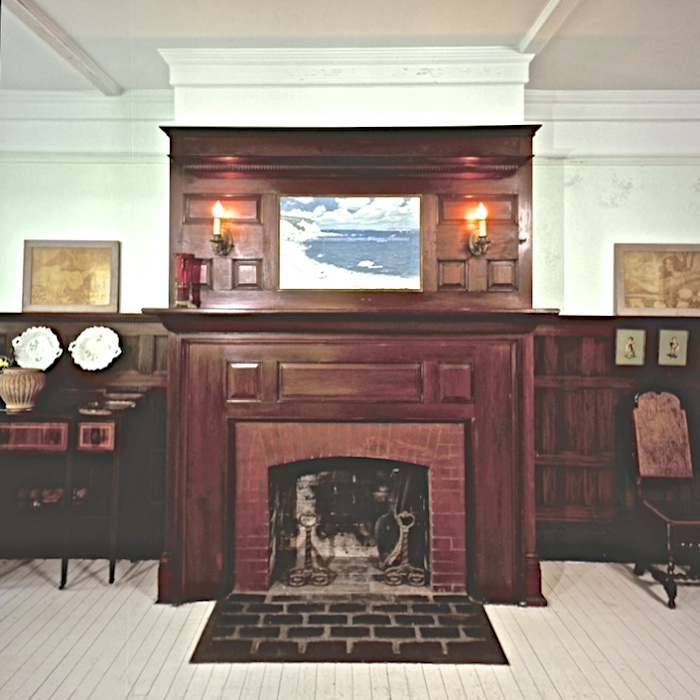
————————————————————————————————–
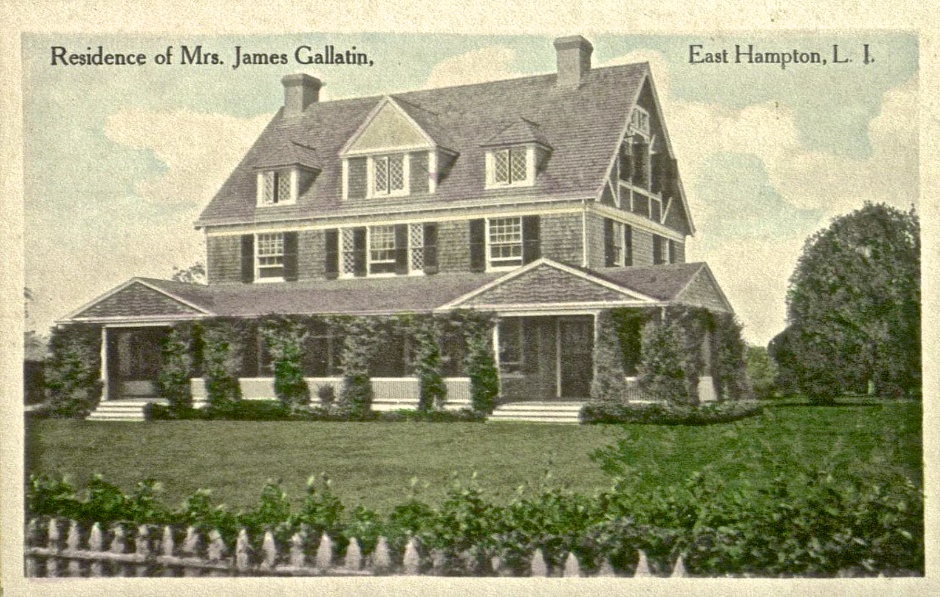
James Gallatin House, 4 Pudding Hill Lane, 1889, c.1900 postcard.
————————————————————————————————–
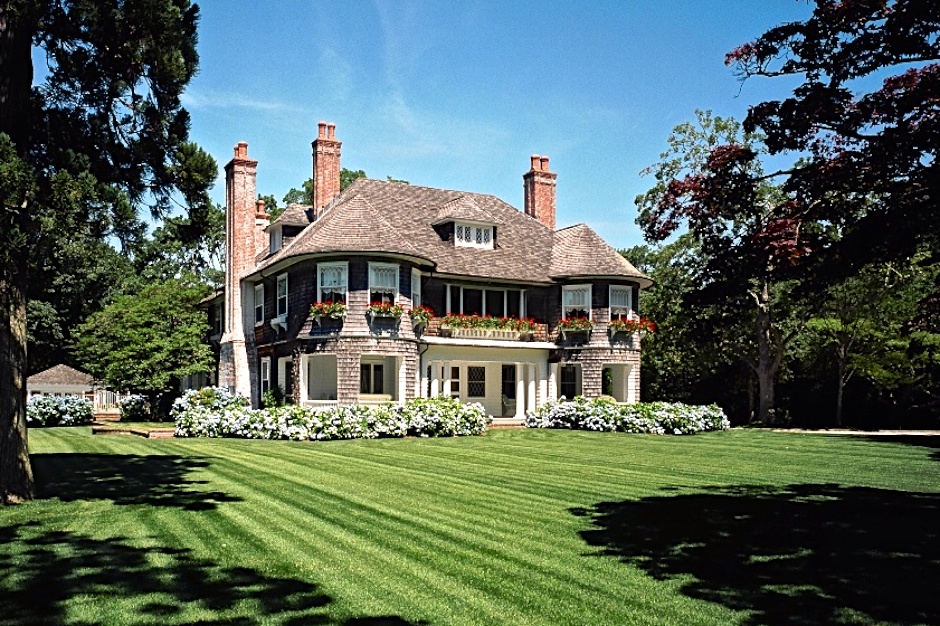
Joseph Greenleaf Thorp designed this house for Frances H. Davies, a New York banker, who commuted to Three Mile Harbor in his yacht Alcatordo. The Davies House is one of Thorp’s most impressive compositions.
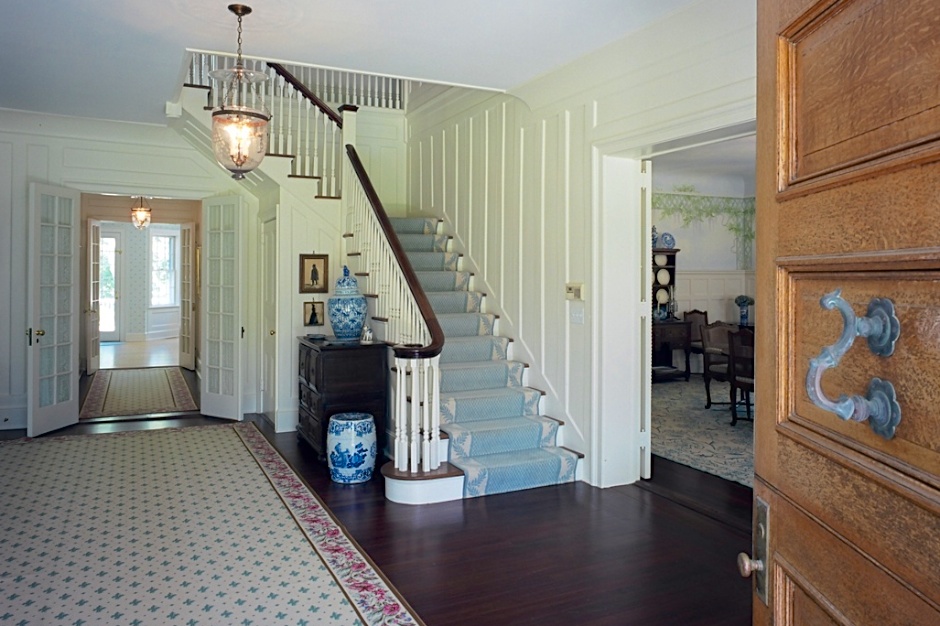
View through the front door into the entrance hall.
———————————————
Two views of the front porch follow — The juxtaposition of white Doric columns and the flanking round shingled towers give this symmetrical composition a casual character appropriate to a summer cottage.
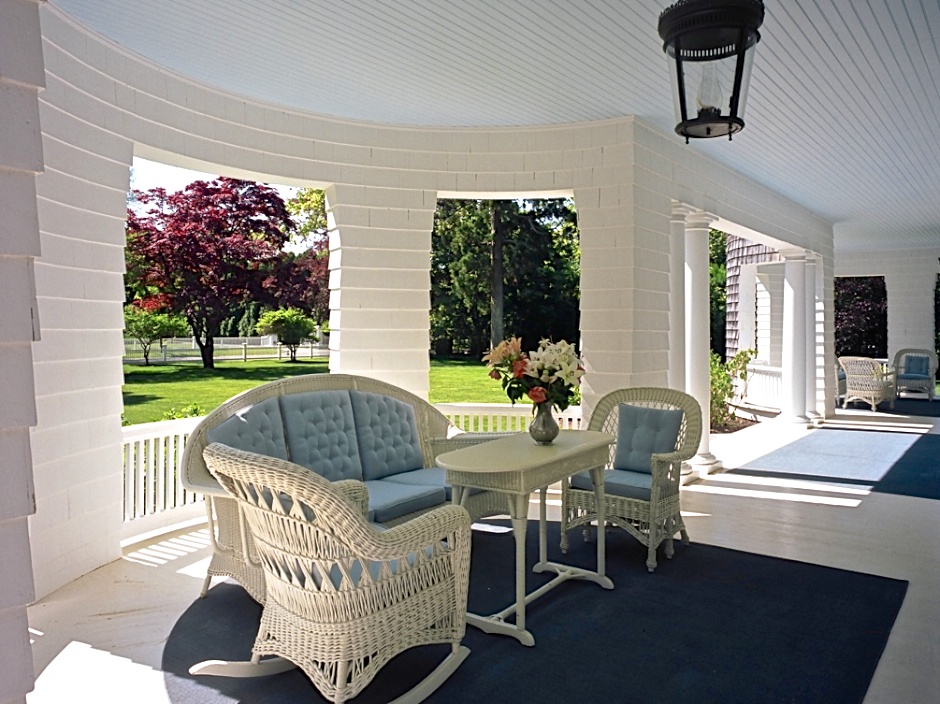
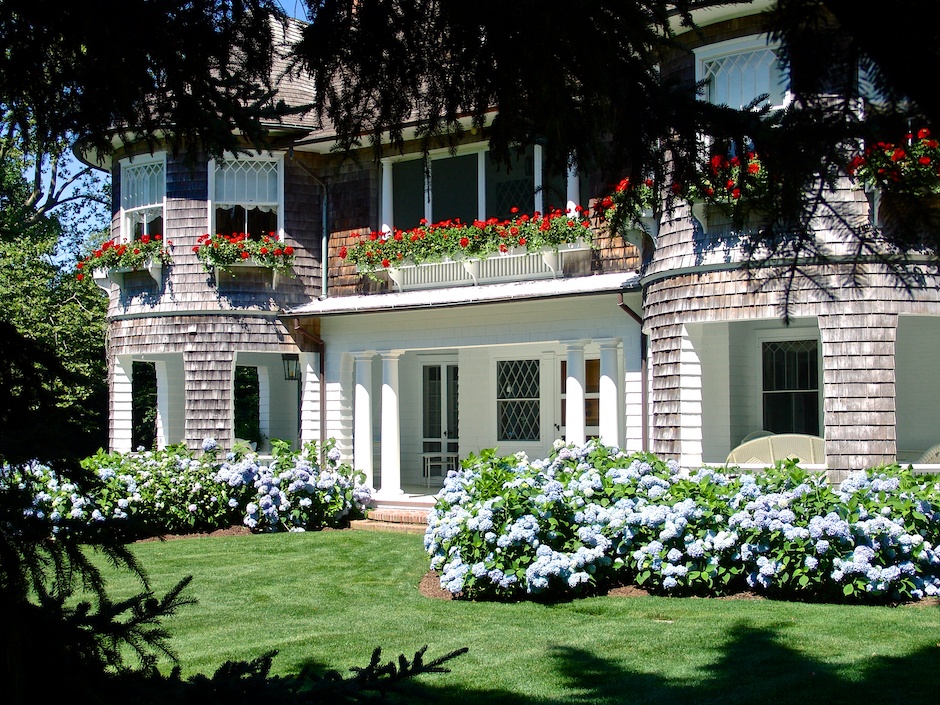
______________________________________________________________
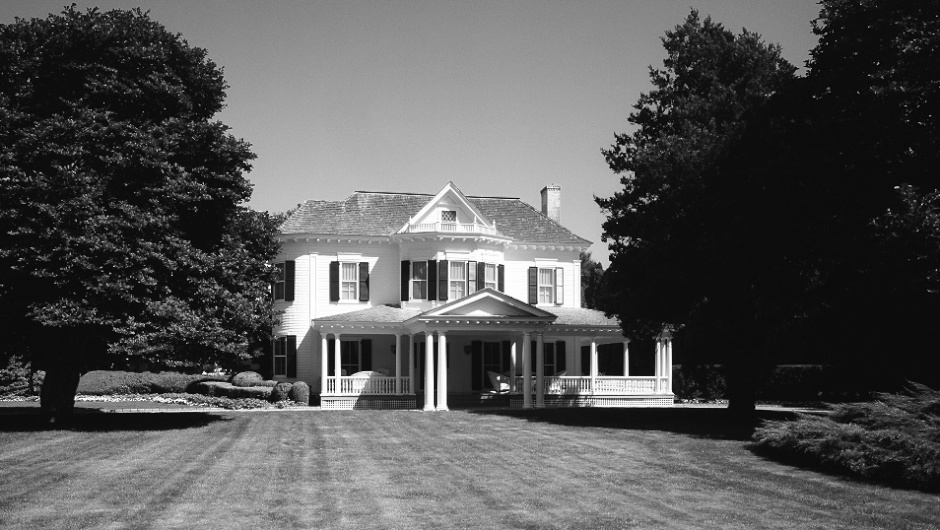
In 1901, Henry Terbell hired the Southampton architect Walter E. Brady to remodel his 1869-1870 Stick-Style bill into a Colonial Revival style residence which he then named “Maidstone Hall.”

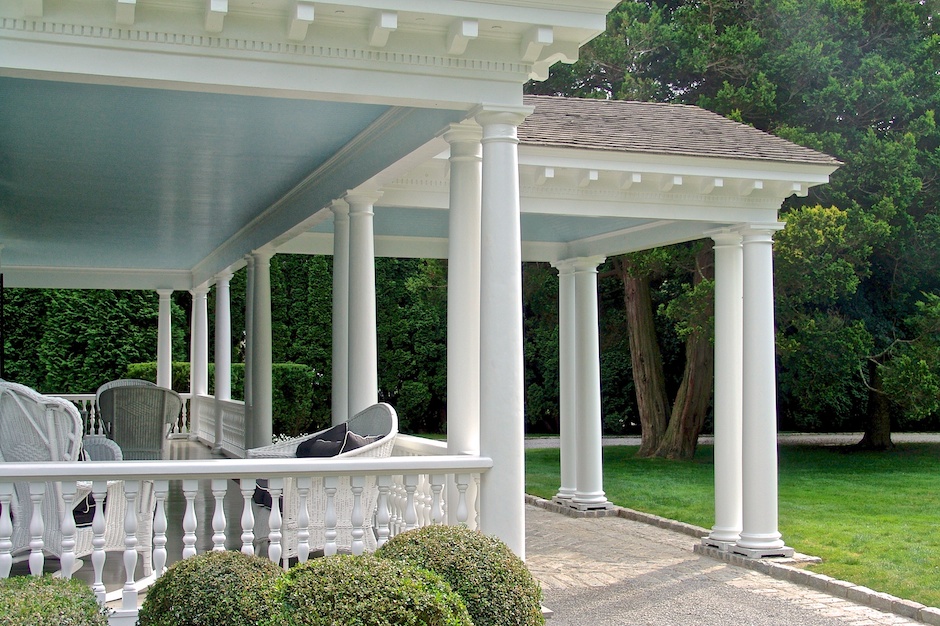
______________________________________________________________
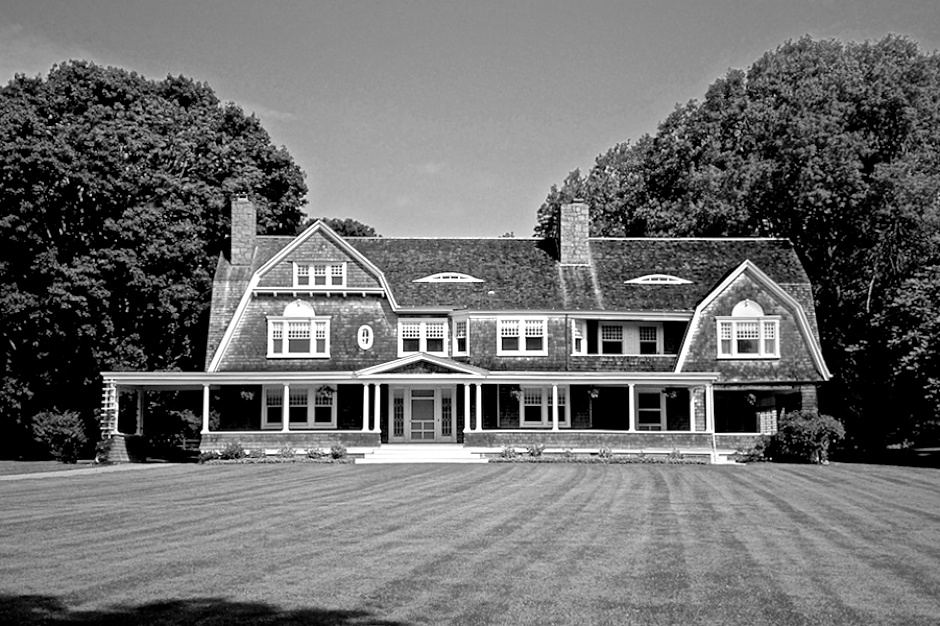
The New York architect Cyrus L.W. Eidlitz designed this house for his sister Harriet and her husband, Schuyler Quackenbush. Although Eidlitz specialized in commercial work, he produced one of East Hampton’s most elegant and sophisticated Shingle Style cottages. The house features an asymmetrical design with gambrel dormers of different sizes, windows placed in a varied rhythm, walls that project and recede and a porch that cuts deeper and deeper under the house all composed into an animated yet harmonious facade.
The Quackenbush House still inspires Shingle Style architects today. The architecture critic Paul Goldberger said the Quackenbush house was “probably the most imitated house in all of the Hamptons” (East Hampton Star, March 14, 2007).
The Quackenbush House is also one of the best examples of stewardship of an important historic house by one family over multiple generations. This became the home of Dr. Ogden M. Edwards and his wife Lela about 1915 and today the house is still being well maintained in its original condition by their descendants.
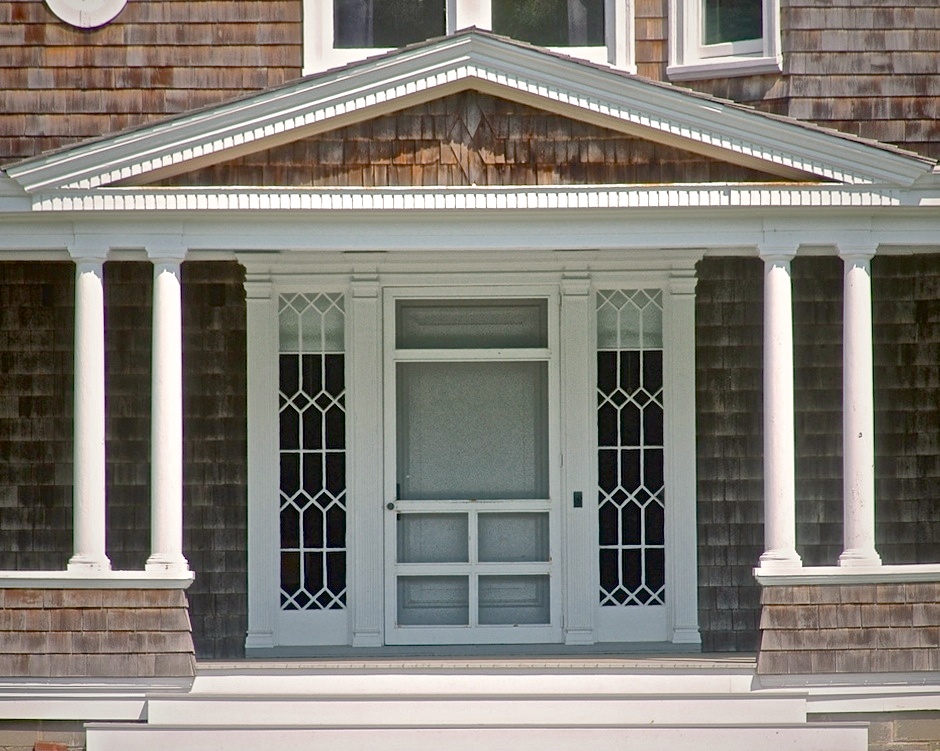
————————————————————————————————–
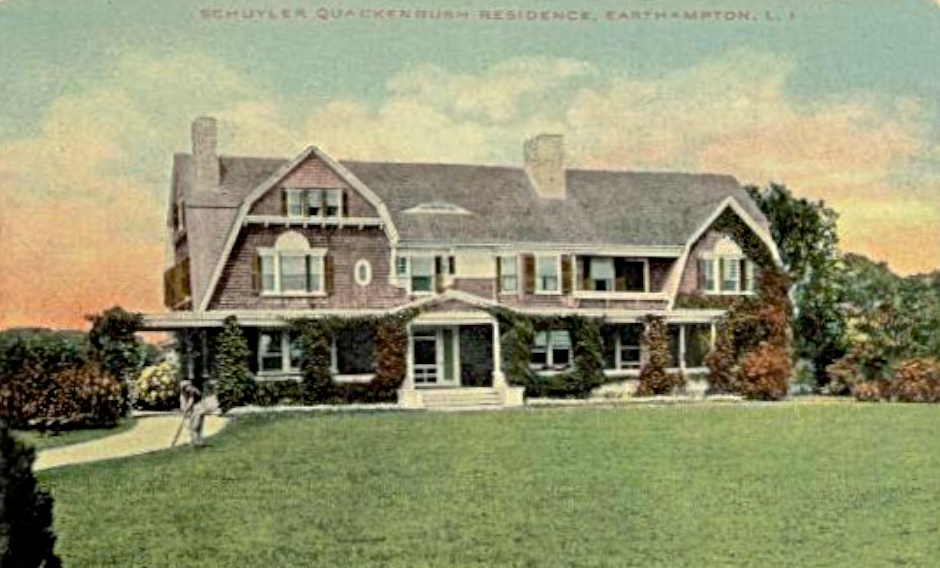
Shuyler Quackenbush House
————————————————————————————————–
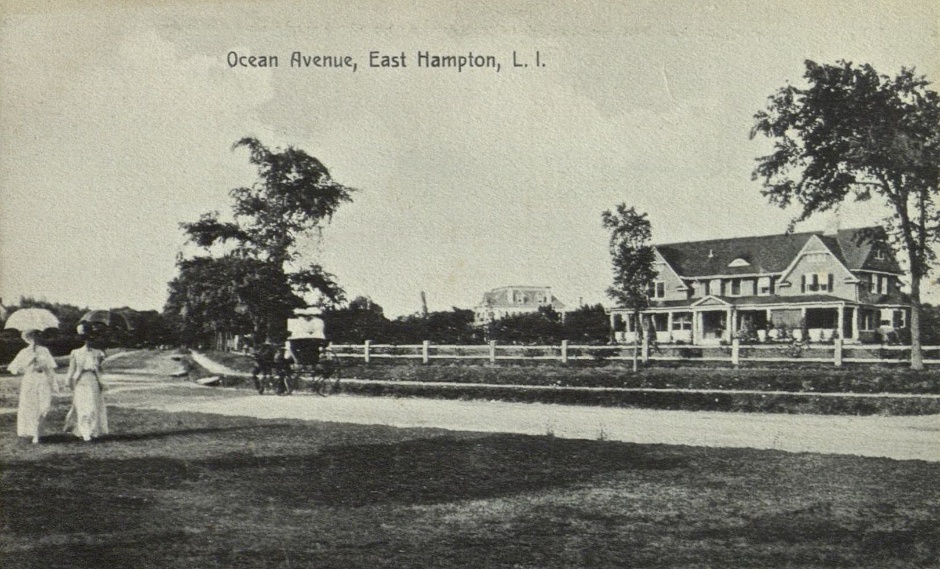
Arthur H. Van Brunt House, 61 Ocean Avenue, 1907, c. 1910 postcard.
John Custis Lawrence designed this house for Arthur H. Van Brunt, a New York lawyer. Lawrence was an East Hampton native who apprenticed with the builder George Eldredge, eventually became his own draftsman and learned architecture on the job. Outside architects like Isaac Henry Green and Cyrus L.W. Eidlitz introduced the Shingle Style to East Hampton and local architects followed in their lead. In designing the Van Brunt House, John Custis Lawrence was clearly influenced by Eidlitz’s Quackenbush House, which stands directly across the street.
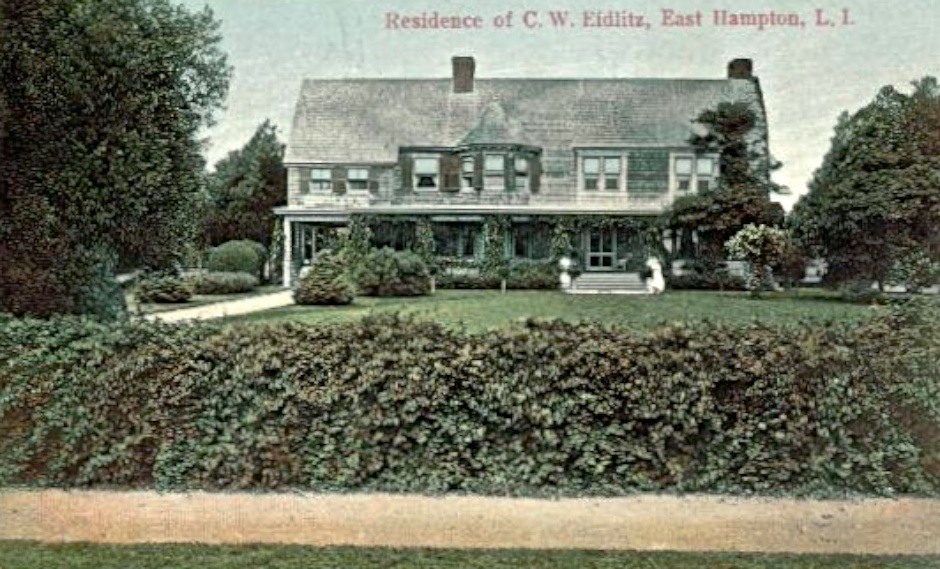
Cyrus L.W. Eidlitz House, 58 Ocean Avenue, 1897, c. 1910 postcard.
Architect Cyrus L. W. Eidlitz was a prominent figure of East Hampton’s early summer colony and was a founding member of the Maidstone Club in 1891. Before designing his own house, he spent summers in Main Street boarding houses.
______________________________________________________________
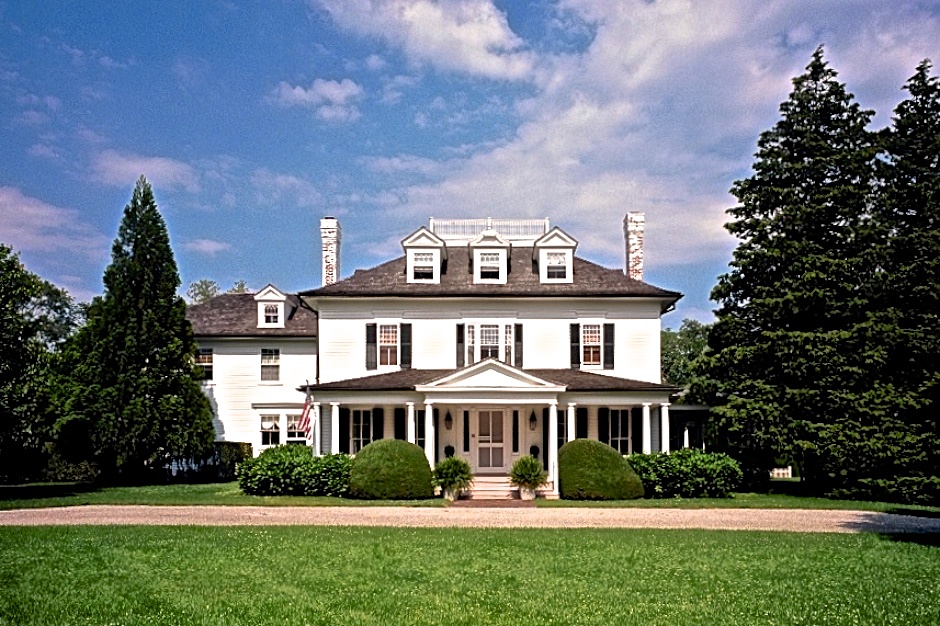
Mrs. Simeon Draper hired the builder A.O.Jones to transform her cottage, which had been built about 1871 for Reverend Stephen Mershon, adding a columned porch and classical details including the dormers and roof balustrade seen above.
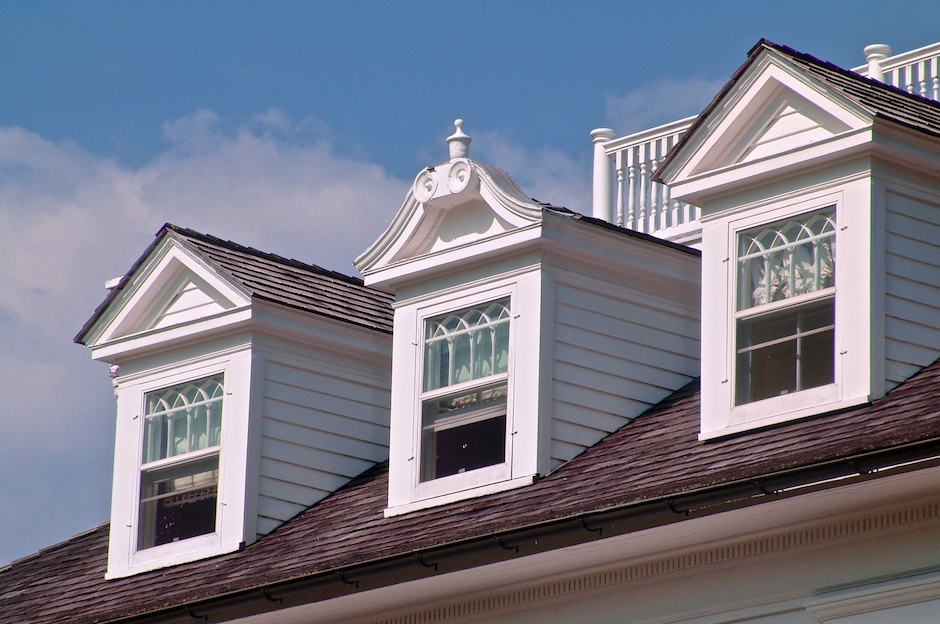
______________________________________________________________

Francis G. Potter House
The work of the prolific local architect Joseph Greenleaf Thorp is represented on Ocean Avenue by the Frederick G. Potter House, the E. Clifford Potter House and the Francis H. Davies House. Joseph Greenleaf Thorp designed more cottages in East Hampton than any other architect. In his 1903 article on East Hampton’s cottages, Charles de Kay wrote that “the character of East Hampton’s unpretentious architecture owes a good deal to the taste of Mr. J. Greenleaf Thorp” (The Architectural Record, January 1903).
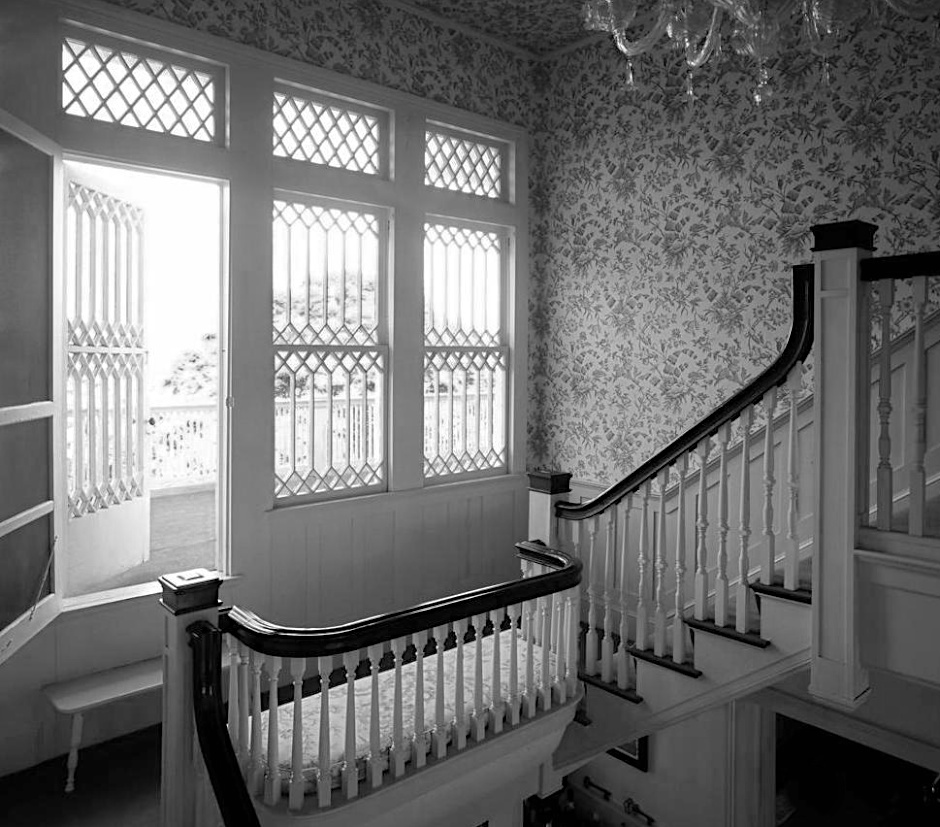
Above is the stairway that Thorp designed for the Frederick G. Potter House. Shingle Style architects developed their stairways to be major interior features that also functioned as living spaces. In the Potter House, the stairway landing became a place to contemplate a view of Hook Pond either from the cantilevered bench or by using the fold-down step to walk out onto the roof of the front porch.

E. Clifford Potter House, 6 Lily Pond Lane, 1899, c. 1910 postcard.
————————————————————————————————–
MAIN BEACH, EAST HAMPTON
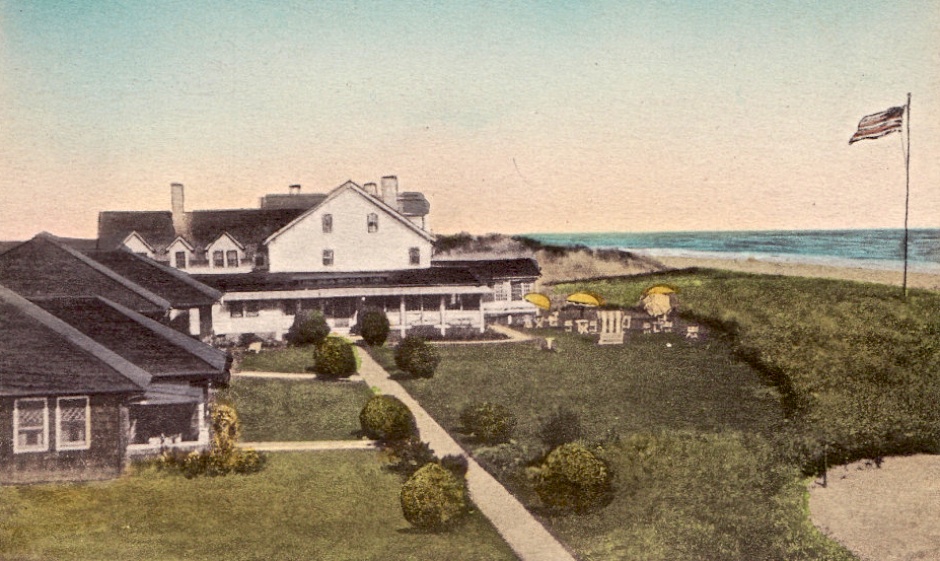
The Sea Spray Inn was moved from Main Street to the dunes in 1902. The main building was destroyed by fire in 1978.


———————————————-
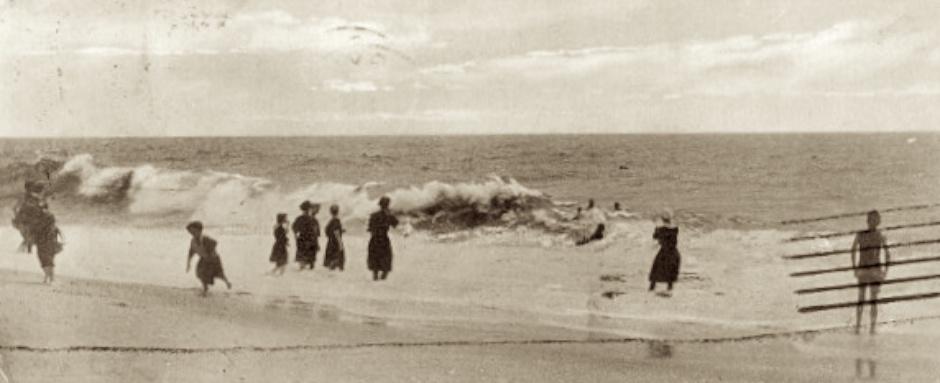
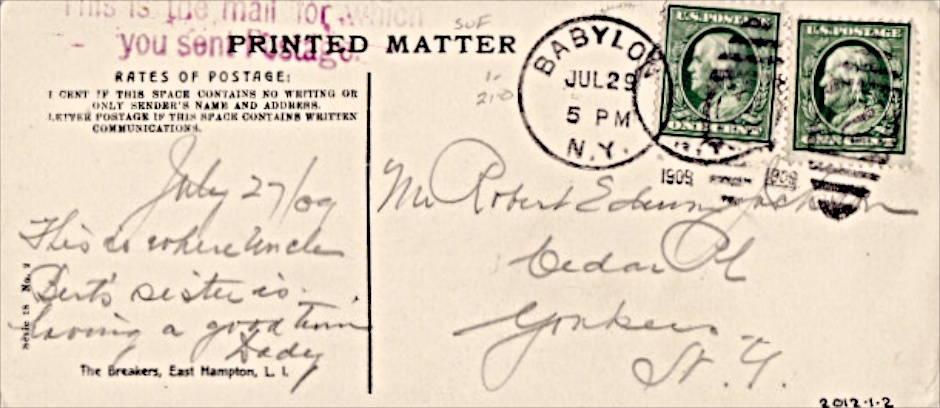
———————————————-
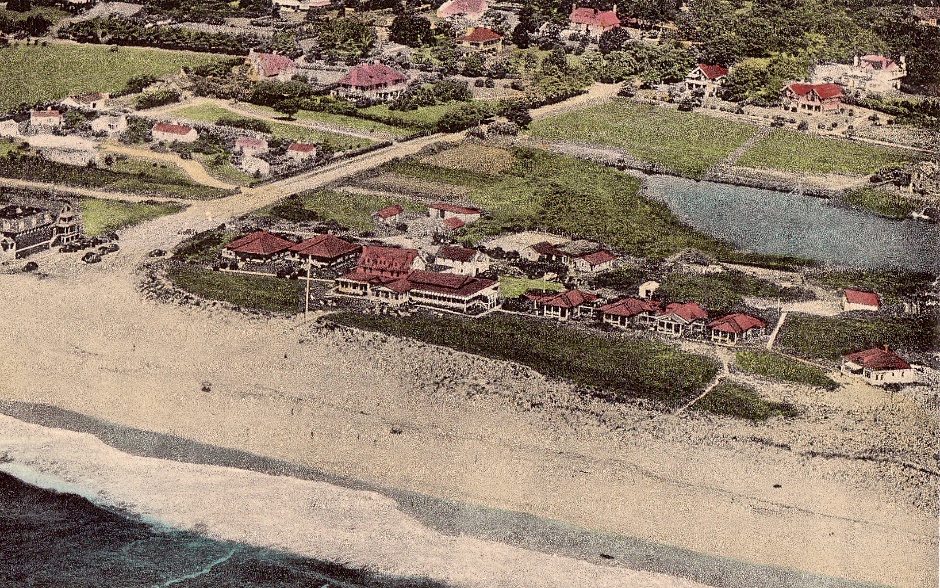
Atlantic Ocean, Main Beach, Sea Spray Inn, Hook Pond, Ocean Avenue
_______________________________________________________
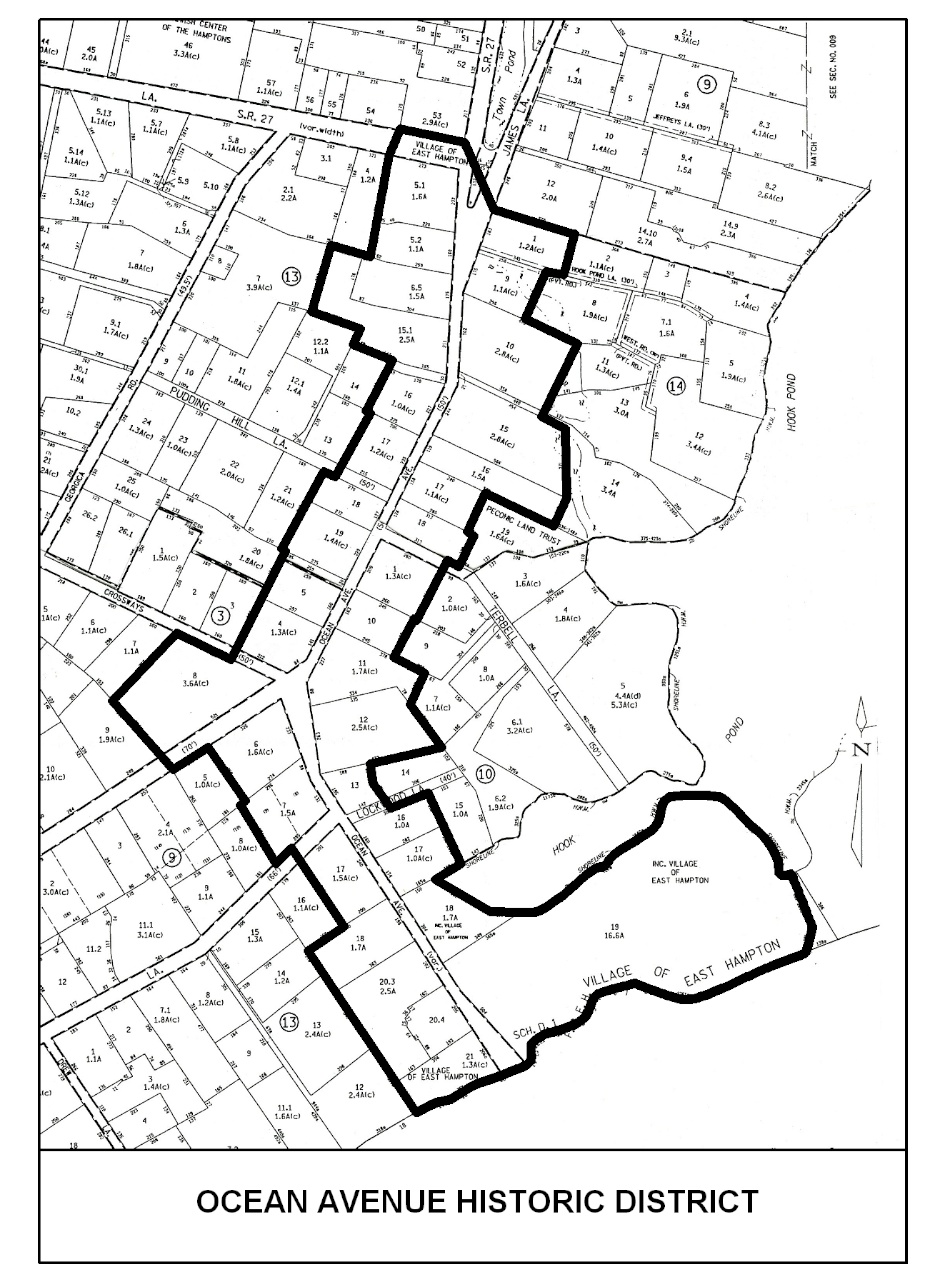
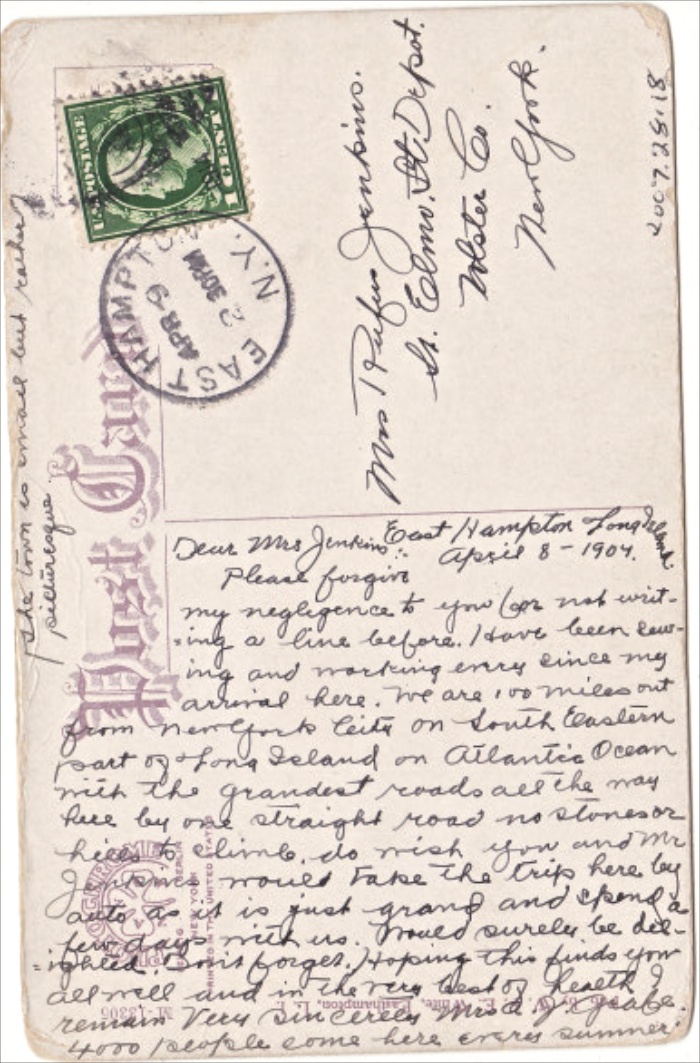
Postcard mailed by Mrs. A.J. Grafe to Mrs. Rufus Jenkins, April 8, 1904.
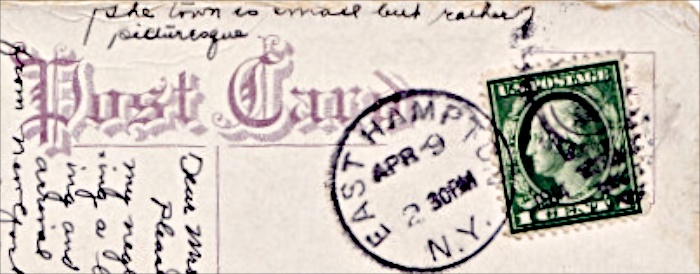
Correspondence Detail.
_____________________________________________________________
Archival postcards courtesy of the East Hampton Historical Society.
East Hampton Historical Society: www.easthamptonhistory.org
Village of East Hampton: www.easthamptonvillage.org
Narrative by Robert Hefner, Director of Historic Services, Village of East Hampton. Prepared for the 2008 Report to Residents — The Ocean Avenue Historic District.
Visit: AAQ/Content/Profile: Ocean Avenue, East Hampton
Visit: AAQ/Portfolio/Preservation — East Hampton Main Street Historic District/East Side
Visit: AAQ/Portfolio/Preservation — East Hampton Main Street Historic District/West Side
——————————————————————
Photographs/copyright, except postcard & aerial views, Jeff Heatley.
______________________________________________________________________________
